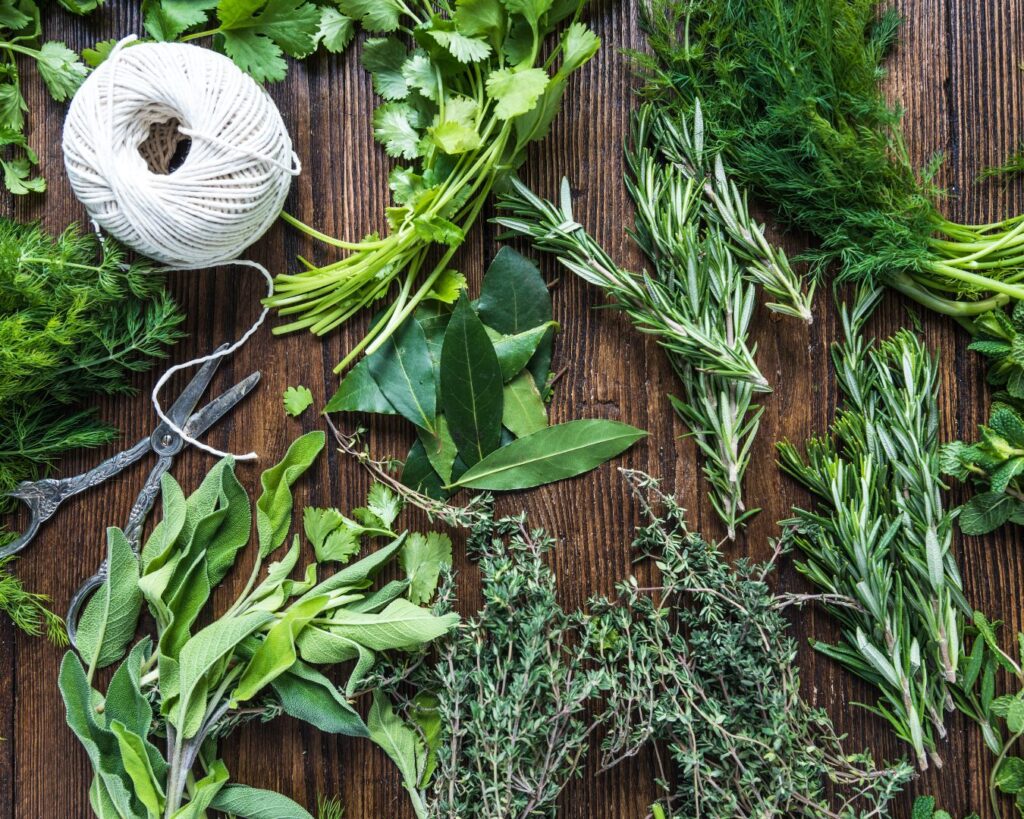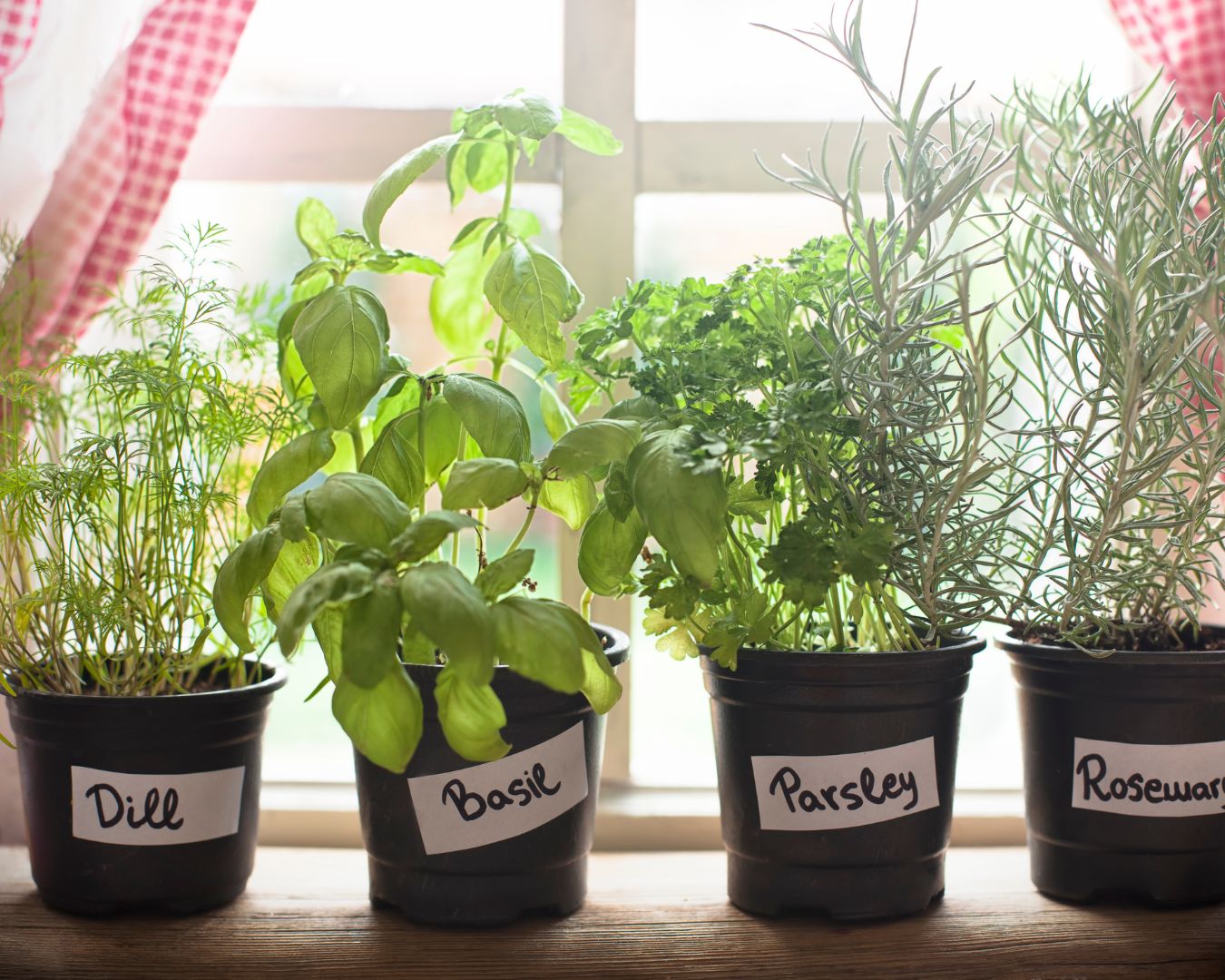How to Grow and Preserve Fresh Herbs in the Kitchen
Fresh herbs are a wonderful addition to any kitchen, bringing vibrant flavors, aromas, and nutrients to your cooking. Growing your own herbs not only saves money but also ensures that you have a steady supply of fresh, pesticide-free herbs at your fingertips. Additionally, preserving them ensures you can enjoy their flavors year-round. This guide will walk you through the basics of growing and preserving fresh herbs in your kitchen.

Growing Fresh Herbs Indoors
Growing herbs indoors is simple and rewarding. With just a few pots, some good-quality soil, and proper light, you can create a mini herb garden right in your kitchen.
1. Choosing the Right Herbs
Not all herbs grow equally well indoors, but there are several that thrive in pots and limited space. Some of the best herbs to grow indoors include:
- Basil
- Parsley
- Mint
- Cilantro
- Thyme
- Oregano
- Chives
- Rosemary
These herbs are versatile and can be used in a variety of dishes, from salads and soups to sauces and marinades.
2. Selecting the Right Containers
Herbs can grow well in small pots or containers with proper drainage. It’s important to ensure your pots have drainage holes to prevent waterlogging, which can lead to root rot.
- Terracotta pots: Allow for good air circulation and water absorption.
- Plastic pots: Lightweight and hold moisture longer, which is ideal for herbs that like more water, such as basil.
- Self-watering pots: Great for maintaining consistent moisture levels, especially if you tend to forget to water your plants.
3. Soil and Watering Needs
Herbs generally prefer well-draining potting soil that doesn’t retain too much moisture. A light potting mix with perlite or sand works well.
- Watering: Most herbs prefer to be watered when the top inch of soil feels dry. Be careful not to overwater; herbs like rosemary and thyme prefer slightly drier conditions, while basil and mint like more moisture.
- Humidity: Indoor herbs benefit from occasional misting to replicate outdoor humidity levels, especially during winter when indoor air can be dry.
4. Providing Sufficient Light
Herbs need about 6-8 hours of sunlight per day to thrive. Position your herb pots near a sunny window or in an area where they can get plenty of light.
- South-facing windows: Provide the most sunlight throughout the day.
- Grow lights: If natural light is limited, you can use LED or fluorescent grow lights to supplement light and encourage growth.
5. Pruning and Harvesting
Pruning herbs regularly encourages new growth and prevents them from becoming leggy. Always trim just above a leaf node to allow the plant to continue growing.
- Basil: Pinch off the top few leaves regularly to encourage bushy growth.
- Thyme and oregano: Can be cut down to a few inches, and they’ll regrow quickly.
- Mint: Harvest regularly to prevent it from becoming invasive.

Preserving Fresh Herbs
When your herbs are growing abundantly, preserving them ensures that you have their fresh flavors available even when they’re not in season.
1. Drying Herbs
Drying is one of the simplest methods for preserving herbs. Dried herbs last for months and can be used in soups, sauces, and marinades.
- Air drying: Tie herb sprigs into small bundles and hang them upside down in a well-ventilated, dry area. Once completely dry (1-2 weeks), store them in airtight containers.
- Oven drying: Spread herbs on a baking sheet and place them in the oven at the lowest temperature for a few hours, checking regularly until they are completely dry.
- Dehydrator: If you have a food dehydrator, use it to dry herbs at a low temperature.
2. Freezing Herbs
Freezing is a great way to preserve herbs like basil, parsley, and cilantro, which don’t dry as well but retain their flavor when frozen.
- Method 1: Whole leaf freezing: Wash and pat dry the herbs, then lay them out on a baking sheet and freeze. Once frozen, transfer to a resealable bag.
- Method 2: Herb ice cubes: Chop the herbs and place them in ice cube trays. Fill with water or olive oil and freeze. These cubes can be added directly to soups, stews, and sauces for a burst of fresh herb flavor.
3. Making Herb-Infused Oils and Vinegars
Herb-infused oils and vinegars add a concentrated flavor to dressings, marinades, and sauces.
- Infused oil: Gently heat olive oil and add fresh herbs like rosemary, thyme, or basil. Let it cool, then strain and store in a sealed bottle.
- Herb vinegar: Add fresh herbs to a bottle of white wine vinegar or apple cider vinegar. Let it sit for 2-4 weeks, shaking occasionally. Strain and store in a bottle.
4. Herb-Infused Butter
Herb butter is another way to preserve fresh herbs and adds flavor to bread, vegetables, and meats.
- Method: Mix chopped fresh herbs like parsley, chives, or thyme into softened butter. Form into a log and wrap in plastic wrap. Store in the freezer and slice as needed.
Growing and preserving fresh herbs in your kitchen is a rewarding way to enhance your cooking with flavorful, nutritious ingredients. With the right care, your indoor herb garden can thrive year-round, providing a steady supply of herbs for all your culinary creations. By drying, freezing, or infusing your herbs, you can capture their peak flavor and enjoy them even when they’re out of season. Whether you’re a beginner or an experienced home cook, herbs will elevate your dishes to a new level of taste and aroma. Happy growing!

